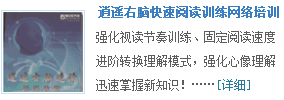【摘要】:进入秋季,各个高中都已经进入了高三年级一轮复习阶段。一轮复习是高考复习中内容最全面、最细致的一轮,也决定了同学们赖以迎接考试的知识基础是否牢靠。因此,如果希望在高考中取得优异的成绩,一轮复习时需要有良好的方法和复习效果。在此,小编为同学们整理了“2014高考英语形容词副词比较”,希望能对大家所有帮助。
2014高考英语形容词副词比较从以下几方面入手:
一,形容词与副词比较级的常用结构
1.a。+形容词或副词原级+as+比较结构
(1)该结构还可以和名词搭配,须注意不定冠词a (an)的位置。例如:Tom can't pay as higha price as I asked.
(2)作否定比较时,常用not as/so.as。
2.形容词或副词比较级
than比较结构例如:He is taller than I.
(1)比较结构部分一般不用定冠词,但特指比较两者中的一个用定冠词the。例如:He is the taller of the two.
(Z)作否定比较要用“less+形容词/副词原形”的结构。例如:Mary is less clever than Tom
(3) more A than B:“与其说B……倒不如说A……”。
例如:He is more brave than wise与其说他机智,不如说他勇敢。
(4) the+比较级….the+比较级:“越……就越……”。例如:The faster an object moves, the greaterthe air resistance is.
3.形容词、副词的最高级
(1)用the+形容词或副词的最高级表达,并且有一个短语或从句表示在那个范围内。例如:YVho is the mostclever child, Li Lei, Jim or Lily?
(2)用no, nothing, can't, never等否定词十比较级表达。例如:He had never spent a more worrying day.
(3)在than后加all other... the others, any other.,.anyof the other... any of the others或anything (anybody) else表达。例如:She plays the piano better than all other students/any of the other students/any of the others/anybody else in herclass2 She plays the piano best in her class
(4)用as+形容词或副词的原级+as possible/as onecan表达。例如:.He began to run as fast as he could/asfast as possible.
(5)用形容词或副词的比较级+than ever表达。例如:
By seven o'clock, the wind was blowing harder than ever.
二,容易混淆的形容词与副词的级总结
1.在as.as的结构中,第一个as的前面可以加上表示倍数的词或是某些副词修饰语:nearly, almost, just,exactly, not nearly(根本不),by no means(绝不),quite等.例如:
(1) Asia is four times as large as Europe.亚洲有欧洲的四倍大(亚洲比欧洲大三倍)。
(2)James is not nearly as tall as Robert.詹姆斯根本没有罗伯特高。
2.在as...as的结构中,考生还常忽略以下两种句型:as much+不可数名词+as和as many+复数可数名词+as。例如:
(l)She spreads as much butter on her bread as Janeusually does.她在面包上涂的黄油与简通常涂的一样多。
(2) He has learned as many English words as hisbrother (has).他已学了和他哥哥一样多的英文单词。
3.没有比较对象的比较结构,其实并非真正的比较。
例如:There is more than one solution to the problem.这个问题的解决办法不止一个。
4.no+比较级十than的结构表示“A和B-样不……”。
例如:Tom is no wiser than John汤姆和约翰一样傻。
5.倍数的表达方法。在表达一方是另一方的若干倍时,常用如下表达方式:
(1)“……倍数+as+adj. /adv.(原级)+as…”,在两个as之间可用many(修饰可数名词),much(修饰不可数名词)和其他相应的词。
(2)“……倍数+adj. /adv.(比较级)+than..”。
(3)“……倍数+the size/height/length/weight/width/depth..+of+the+名词”。
例如:
(l)There are more than twice as many books as fiveyears ago.
(2)We are eating more than twice as many vegetablesper person today as they did in 1910.
句中 more than 修饰twice 是该句的难点。
(3) After the new technique was introduced,the factoryproduced twice asmany tractors in 1988 as the year before
三、几组重要的词语辨析
1.very和much的区别
(1)在可分等级的形容词和副词前使用very而不用rriuch。
(2)表示状态的过去分词前用verYo如a very frightenedboy,a very tired child,a very complicated problema一般的情况下,以-ing.-ed结尾的分词多用much,very much/greatly等修饰。
We were greatly shocked by the news about Tom Iwas much amused by Jack's attitude.
(3)已转化为形容词的现在分词前用veryo如veryinteresting/worrying/exciting.
(4) too前用much或far,不用very。如You are much/far/a lot too nice.另外,在too many/much, too few/little前用far。例如:
There's far too little opportunity for adventure thesedays. We've got far too many eggs and far too few egg cups
(5)关于原级形容词要记住下列固定的修饰结构:
①修饰绝对意义的形容词,一般不用very,而用quite,completely, well, entirelyo如quite wrong(mistaken, sure),completely dead, quite impossible, quite perfect等。
②修饰以a_开头的形容词,多有特殊的修饰词:quitealone, very much alone, wide awake, fast asleep, verymuch afraid。
③修饰一些特殊形容词的修饰语有:be well worth,much the same, freezing cold, quite different, terriblycold/ frightening。
2.so…that…与such..that.的区别so+形容词/副词+that…so+形容词+a(n)+单数可数名词+that…so+many/much/little/few+名词+that…such+a(n)+形容词十单数可数名词+that…such+形容词十不可数名词+that…such+形容词十复数名词+that-.,注意:下列结构中只能用so不可用such,当名词前有many,much,little,few等表示“多、少”的词修饰时,如somuch progress,∞many people,So little food, so fewapples等。但当little表示“小”时用such。如They aresuch little boys that they can't dress themselves。下列so的用法是错误的:so a difficult problem,so difficultproblems, so hot weather。
3.其他几组词的辨析
(1) ago,before:ago表示以现在为起点的“以前”;before指以过去或将来的某时刻为起点的“以前”。泛指“以前”用before而不用ago。
(2> already,yet,still:aln}ady表示某事已经发生;yet表示期待某事发生;still表示某事还在进行,主要用于肯定句。
(3) too,also,either:too和also用于肯定句,too多用于口语,also多用于书面语,either用于否定句。
(4)good,well:与good不同的是,well作形容词,只能在系动词后作表语,表示“身体状况好”,也作副词修饰动词。
(5)quick,fast:作形容词皆表示“快”。fast多指运动的物体,含持续的意思。quick多指一次动作的敏捷、突然,而且持续的时间较短。
(6) real,true:作形容词表示“真的”。real强调真实存在的而不是幻想的,在句中常作定语;t,u。指与事实标准和实际情况相符合,在句中作表语或定语。
(7) hard,difficult:均表示“困难”,但hard通常指体力上困难;difficult则指智力或技能上的困难,困难程度大于hard。它们都可作定语和表语。
4.多个形容词顺序巧记歌限定描绘大长高,形状年龄和新老。
颜色国籍跟材料,作用类别往后靠。
“限定词”包括:冠词、物主代词、指示代词或数词,位于各类形容词前。它本身分为三位,即前、中、后。前位限定词有all,half,both,分数和倍数;中位限定词有冠词、指示代词、物主代词等;后位限定词有基数词和序数词,但序数词位于基数词前。如both my hands,all half his income等。
“描绘”性形容词如beautiful,bad,cold,great等。“大长高”表示大小、长短、高低等词。表示“形状”的词如round,square。“国籍”指表示一个国家或地区的词。“材料”的词如wooden,woolen,stone,silk等。“作用类别”的词如medical, college,writing desk,police car等。
也有将形容词的顺序总结为:好大新颜国材,即opinion( good, bad)→size( big, small)→age( new, old)→color( red, blue)→origin( American)→material( wooden)。这样也比较容易记住。
【总结】2014高考英语形容词副词比较到这里就结束了,希望大家好好复习,未来是属于你们的。
更多精彩内容推荐:
本文来自:逍遥右脑记忆 http://www.jiyifa.net/gaosan/201738.html
相关阅读:高考语文基础知识——高考易错成语



